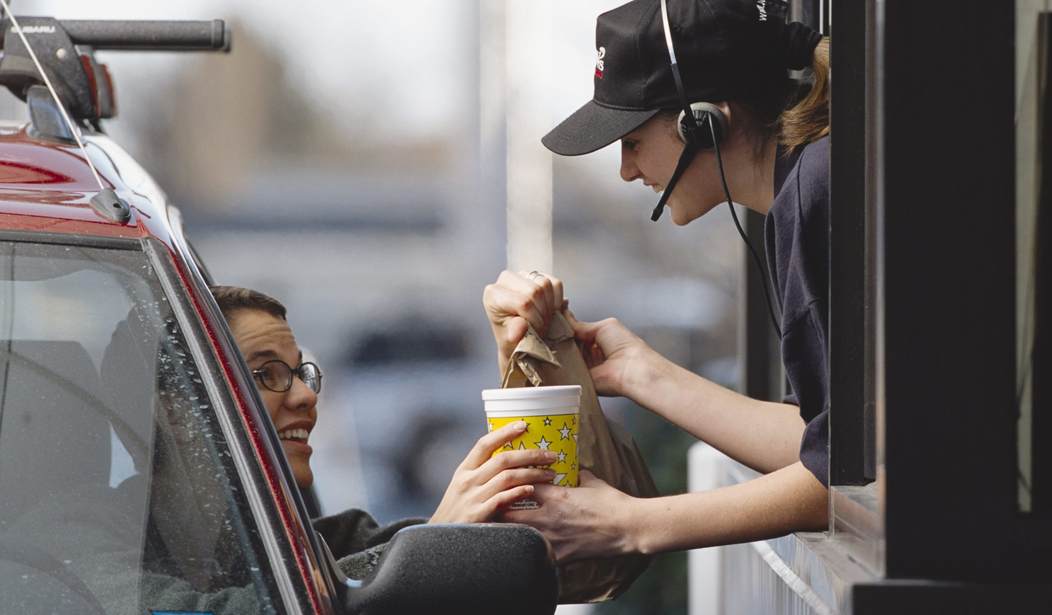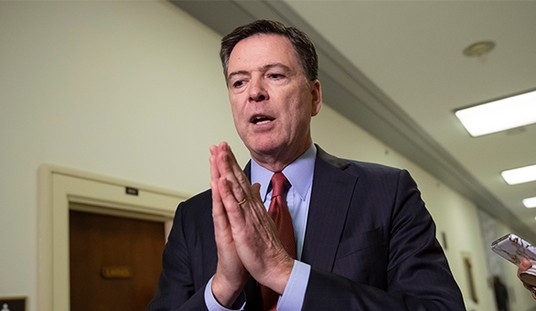We’ve all been there. You take your family’s complicated, multi-item order down on your phone’s notepad, then drive to the local fast food joint. You wait in line three or four cars deep, then pull up to the speaker. Between the weather and the condition of the two-way comms, it’s nearly a miracle if you can understand what the person on the other end is saying.
You place your order and hope they actually got it right. Then you pull up, hand a stranger your credit card, they take it and for that brief moment you just hope you’re not having your identity swiped along with your card. Then they hand you a bag full of stuff and you hope, again, that what you ordered is what’s in the bag. But thanks to the line of cars building behind you, you don’t feel right about sitting there at the window long enough to check everything. You can only check once you’re home, and of course your kid’s main meal is totally wrong.
Thanks to an Austin, Texas, tech company, all of the dubious aspects of the above could be things of the past.
The company is called Digital Touch Systems, and they’re one of the seemingly endless Austin technology companies that make central Texas the “Silicon Prairie.” Chances are you’ve seen their work wherever you may live across the country.
DTS has recently done digital signage installations at a convenience store chain across Wisconsin, another in North Carolina, and a very large video wall installation at Austin’s convention center, home to SXSW. I first met them about three years ago when I was producing an exhibit for the Alamo in San Antonio. DTS’s parent company supplied some British-made translucent touchscreen artifact display cases, and when we had a heating issue in one (historical artifacts tend to have very specific temperature and humidity requirements), Bryan McCarley and his engineering team created a concealed cooling system so the case always kept the right temperature to preserve the item: A one-of-a-kind Bowie knife. The exhibit, on the life and knife of Jim Bowie, was a huge hit.
I recently caught up with McCarley at his shop in North Austin, and saw a slick yellow kiosk that may transform a staple of our lives. The DTS team is field testing a touchscreen kiosk system that adds drive-thru to Subway restaurants, and ensures what you order is what you get.
“This is a smart drive-thru kiosk,” says McCarley with a smile. McCarley shows me a flat, yellow metal case with a 32-inch touchscreen in the center. It’s about 10 inches thick and weighs about 65 pounds. Inside is the screen plus direct heating and cooling elements McCarley and his team invented and for which they have a patent pending. A thermostat triggers the temperature control system so it automatically adjusts the internal temperature to keep the screen working in all conditions. “This system is eco-friendly, remotely managed, and hardened against everything from extreme weather to vandalism. You can hit them with winter snow, summer sun, or a hammer, whatever, they’ll stand up to it. We’re Texans and we build ‘em tough.”
Four Subway restaurants in Oklahoma have been field testing the smart drive-thru kiosks, and the results are impressive. None of the touch kiosks have experienced any downtime, according to McCarley. They have eliminated confusion and uncertainty over customer orders. By taking Subway sandwich ordering outdoors, they have increased business at their respective stores.
“McDonald’s has been testing touch kiosks inside their restaurants and see how much customers love them, so soon we’ll see touch kiosks inside every McDonald’s in the country” McCarley says. “It’s only natural this technology will go to the drive-thru too.” He adds the complexity of ordering custom sandwiches at Subway and similar restaurants has usually kept them out of the drive-thru game altogether, but the DTS smart kiosks change that.
“The software in the kiosks is called Snap and it’s extremely flexible. It it can handle how sub sandwiches are ordered and customized. And if you, say, want to run a sale at breakfast and another one at lunch, you can program for that,” McCarley says. “They can bundle items to give customers the best price, and if you own multiple kiosks at multiple stores you can manage them all from one computer. They can also note any ingredients that may cause food allergies. And one of the best parts is customers pay right there at the kiosk.”
So no more handing your card over to strangers at the second window? “Exactly,” McCarley answers. The kiosks have a secure card swiper and are always online. “That’s the smart part.”
McCarley notes the smart kiosks cost about $15,000 apiece. “One of the test stores averaged a little over $600 a day in sales on its kiosk,” McCarley says, “which means in about 30 days it earned its keep and added a little bit extra. And it never called in sick.”
Someone still has to build the sandwiches and manage the store, so the smart drive-thru kiosks don’t appear to threaten human jobs. If anything, they add another cash flow stream to stores like Subway which do not traditionally operate drive-thru windows.
So if you happen to see a Subway in Norman or a few other Oklahoma cities and it has a drive-thru, you’re seeing one of DTS’ smart kiosks — and possibly the future of American drive-thru dining.









Join the conversation as a VIP Member